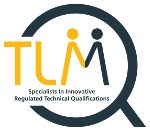Risk Rating Guidance
10.1 – Risk Rating Guidance
This guidance is designed to help with setting severity ratings in the Risk Register which is part of 9.6 Identification and Management of Risk
Severity Ratings Guidance:
-
- High Risk – Inform all senior management, process owners and participants
Intended to identify potential or realised risks, of sufficient serious nature, that TLM directors are included in the communication group. Any Risks rated as ‘High Risk’ will additionally be discussed as part of the meeting agenda in the Directors Board Meetings.
Examples of High Risk:
-
- Realised, Unavoidable and Potential Adverse Effects
-
- Realised, Unavoidable and Potential Conflicts of Interest
-
- Realised, Unavoidable and Potential Competence shortfall
-
- Realised, Unavoidable and Potential Malpractice
-
- Realised, Unavoidable and Potential Maladministration
-
- Realised and Unavoidable Health and Safety Issues
-
- Realised and Unavoidable Financial Headwind > £10000
-
- Realised, Unavoidable and Potential Department of Education Policy Changes
-
- Realised and Unavoidable Website Functional Issue for Centres
-
- Realised and Unavoidable Company Goals and Objectives identified not being reached
-
- Opportunities for Improvement or efficiency savings > £10000
-
- Opportunities of Availability of grants aid or tender opportunities
- Medium Risk – Inform all affected process owners and participants
Intended to identify potential or realised risks, of a serious nature, that it should be given priority for resources for resolution or mitigation through 9.7 Risk Resolution Process.
Examples of Medium Risk:
-
- Potential Health and Safety Issue
-
- Realised and Unavoidable Financial Headwind < £10000
-
- Potential Website Functional Issue for Centres
-
- Realised, Unavoidable and Potential Website Functional Issue for Staff
-
- Potential of Company Goals and Objectives identified not being reached
-
- Realised, Unavoidable and Potential Individual Goals and Objectives identified not being reached
-
- Opportunities for Improvement or efficiency savings < £10000
-
- Qualification and Operational Requests from Centres (risk of not meeting our Customers expectation).
-
- Changes in law or Ofqual requirements that may need a procedural change
- Low Risk – Inform specific process owner and participants
Examples of Low Risk:
Intended to identify long term risk avoidance strategies or improvements (i.e. avoiding risk of a missed opportunity or improvement)
-
- Realised, Unavoidable and Potential issues with BMS Procedures
-
- Significant events requiring long term preparation
-
- Any Audit findings not falling into the categories listed in Medium and High Risk
-
- Audit identified Opportunities for Improvement
-
- Staff and Centre identified Opportunities for Improvement
- Reasonable Risk – Monitor status of risk in Monthly Risk Review Meetings.
Intended to reclassify and record identified risks that have been mitigated through the 9.7 Risk Resolution Process.
Examples of Reasonable Risk:
-
- Any scenario that currently does not represent a low risk but requires monitoring of variables affecting it’s status.
-
- Any potential risk that only requires monitoring
- No Discernable Risk – Show as ‘No Discernable Risk’ in Risk Register
This severity category is reserved to record Risks previously described in the above categories but completely ‘resolved’ through the 9.7 Risk Resolution Process.

